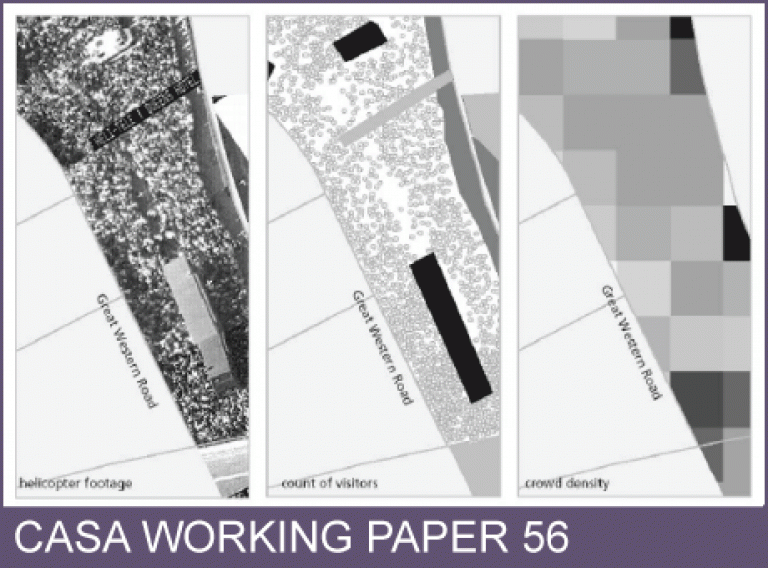CASA Working Paper 56

1 July 2002
The Discrete Dynamics of Small-Scale Spatial Events: Agent-Based Models of Mobility in Carnivals and Street Parades
Small-scale spatial events are situations in which elements or objects vary in such a way that temporal dynamics is intrinsic to their representation and explanation. Some of the clearest examples involve local movement from conventional traffic modeling to disaster evacuation where congestion, crowding, panic, and related safety issue are key features of such events. We propose that such events can be simulated using new variants of pedestrian model, which embody ideas about how behavior emerges from the accumulated interactions between small-scale objects.
We present a model in which the event space is first explored by agents using 'swarm intelligence'. Armed with information about the space, agents then move in an unobstructed fashion to the event. Congestion and problems over safety are then resolved through introducing controls in an iterative fashion and rerunning the model until a 'safe solution' is reached. The model has been developed to simulate the effect of changing the route of the Notting Hill Carnival, an annual event held in west central London over 2 days in August each year. One of the key issues in using such simulation is how the process of modeling interacts with those who manage and control the event. As such, this changes the nature of the modeling problem from one where control and optimization is external to the model to one where this is intrinsic to the simulation.
This working paper is available as a PDF. The file size is 1363KB.
Authors: Michael Batty, Jake Desyllas, Elspeth Duxbury
Publication Date: 1/7/2002
 Close
Close

